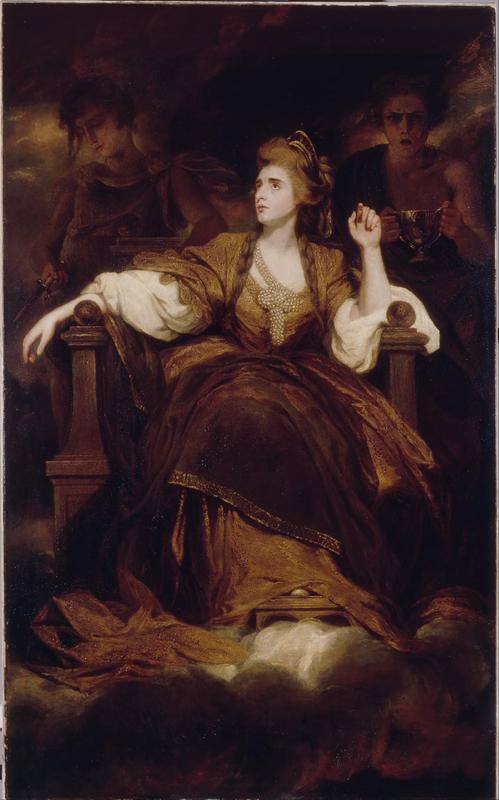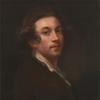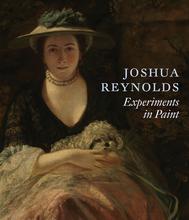More about Sarah Siddons as the Tragic Muse
- All
- Info
- Shop

Contributor
Joshua Reynolds’ regal portrait of the actress Sarah Siddons worked wonders for her reputation as the 18th century’s queen of tragedy.
Reynolds painted many of the most famous men and women of his day, including, in addition to legendary tragic actress Sarah Siddons, the notorious courtesan Kitty Fisher, with whom he was reputed to have a very—ahem—“close” relationship. Whether or not such scandalous rumors about Reynolds’s not-always-strictly-professional relationships with his female models are to be believed, it is true that he played a pivotal role in shaping the public image of some of the most prominent celebrities of 18th-century Britain. Reynolds’s portraits were essentially the 18th-century equivalent of celebrity social media accounts, designed to cultivate a very particular brand for each of his subjects and keep them perpetually basking in the spotlight.
This was certainly the case with his iconic portrait of Sarah Siddons, painted in the guise of Melpomene, Ancient Greek muse of tragedy. In fact, the image has become so deeply entwined with Siddons’s mythos that many later portraits of the actress were based not on her actual appearance, but instead on this celebrated larger-than-life portrait. In it she sits enthroned in queenly repose; the portrait towers over viewers at an intimidating eight feet tall and five feet wide, capturing with its monumental scale the huge amount of fame Siddons managed to garner during her long career as an actress. Reynolds’s selection of a burnished golden-brown palette lends the painting a sort of built-in patina of age, suggesting that, by the time this portrait was painted, Siddons had pretty much already been immortalized as the legendary queen of tragedy she’s seen as today. Behind her, semi-obscured by the gloomy background, are the symbolic figures of Pity (left) and Fear (right), an allusion to an argument made in Aristotle’s Poetics that the purpose of tragedy is to prompt catharsis in its viewers by evoking these two feelings. Siddons herself is encircled in dark, brooding storm-clouds befitting the tumultuous emotional landscape of a tragic play; her hand is raised as though she’s about to deliver one of her famous, deeply-moving soliloquies; and the bronze circlet topping her elaborate braided hairdo furthers her association with royalty. She looks as comfortable in her throne as if she’d been born to it, her hand thrown casually over its arm as if it’s the most natural thing in the world.
Siddons’s queenly bearing may not seem so strange given our present-day breathless worship of famous movie stars, but at the time this portrait was painted, the elevation of stage performers to such a high (even mythical) status was still relatively new. The 18th century saw the beginnings of celebrity culture as we know it today, due in large part to the privatization of stage performances (whereas before they’d been controlled by a governing power, often a prince or king) and the resulting commercialization of the entertainment industry. Stage performances migrated away from elite courtly audiences toward large and populous cities, enjoying a more diverse urban audience which included the new middle class. In fact, the word “celebrity” didn’t start to be used in its modern sense—to mean a very famous individual—until around 1830, reflecting just how much the concept had evolved over the course of the previous century. Similarly, the word “star” began to be used to describe very famous actors in the early 1750s, right around the time celebrity culture (and Siddons herself!) were born. Coincidence? I think not.
Because Siddons kind of was the original movie star—and this was before movies were even a thing. Her performances as Lady Macbeth and other iconic ladies of tragedy were so powerful that they routinely drove her audiences into positively hysterical frenzies of emotion, according to one biographer eliciting “sobs,” “tears,” and even “shrieks.” The painter Joseph Severn once joyfully recounted being “flattened out like a pancake” by an overwrought crowd as he tried to push his way to the front of the pit at the Drury Lane theater, a not-uncommon occurrence at Siddons performances. And when Siddons played Lady Macbeth’s sleepwalking scene in 1812, she received a standing ovation so enthusiastic that the show was cut short, the audience ending the play then and there with their applause because they thought they’d reached the performance’s peak and didn’t want to diminish an already-perfect experience by watching inferior actors act out inferior scenes. Talk about a devoted fanbase.
It was for this reason that William Hazlitt once famously dubbed Siddons “Tragedy personified,” an opinion shared by many of his contemporaries. Siddons’s association with the tragic muse wasn’t limited to Reynolds either—the painter George Romney also tried his hand at depicting her in the role of Melpomene, although apparently, when he caught sight of Reynolds’s rendition, he felt so intimidated that he decided to dramatically alter his own, cutting it down from full-length to a head-and-shoulders format, thus obscuring both the portrait’s similarity to Reynolds’s and its original allusion to the tragic muse. Siddons herself seems to have encouraged this blurring between where the Melpomene ended and she began, reportedly modeling all of her costumes, stage gestures, and hairstyles on ancient sculptures. The popularity of this portrait sealed the deal, cementing in the public imagination Siddons’s greatest role: that of Melpomene in the flesh. The lesson here? If you want a good publicity campaign to help get your acting career off the ground, Josh is your guy. Oh, and if you want to gain respectability as an actress working in the 18th century (a time when they were considered little better than prostitutes due to their willingness to put themselves in the public eye), try convincing everyone you’re not actually human, but instead the living embodiment of a figure from Greek mythology. It couldn’t hurt.
Sources
- Asleson, Robyn. A Passion for Performance: Sarah Siddons and her Portraitists. Los Angeles: The J. Paul Getty Museum, 1999.
- “The First Actresses: Nell Gwyn to Sarah Siddons.” National Portrait Gallery. Accessed April 10, 2020. https://www.npg.org.uk/whatson/the-first-actresses/first_actresses_exhi… first-actresses-explore.
- Hazlitt, William. “Mrs. Siddons.” The Examiner, June 16, 1816.
- “Kitty Fisher: An Eighteenth-Century Celebrity.” National Trust. Accessed April 8, 2020. https://www.nationaltrust.org.uk/petworth-house-and-park/features/kitty…-.
- Knight, Christopher. “Sarah Siddons, Artist’s Muse.” Los Angeles Times, July 31, 1999. https://www.latimes.com/archives/la-xpm-1999-jul-31-ca-61203-story.html
- Lilti, Antoine. The Invention of Celebrity. Translated by Lynn Jeffress. Cambridge, UK: Polity Press, 2017.
- Pascoe, Judith. The Sarah Siddons Audio Files: Romanticism and the Lost Voice. Ann Arbor: The University of Michigan Press, 2011.
- “Tate Britain Exhibition: Joshua Reynolds: The Creation of Celebrity.” Tate. Accessed April 8, 2020. https://www.tate.org.uk/whats-on/tate-britain/exhibition/joshua-reynold….
Featured Content
Here is what Wikipedia says about Sarah Siddons as the Tragic Muse
Sarah Siddons as the Tragic Muse, or Mrs. Siddons as the Tragic Muse, is a 1783–1784 painting by English painter Sir Joshua Reynolds. The 1784 version is in the Huntington Library art museum, while a 1789 reproduction from Reynolds's studio is in the Dulwich Picture Gallery.
Check out the full Wikipedia article about Sarah Siddons as the Tragic Muse















